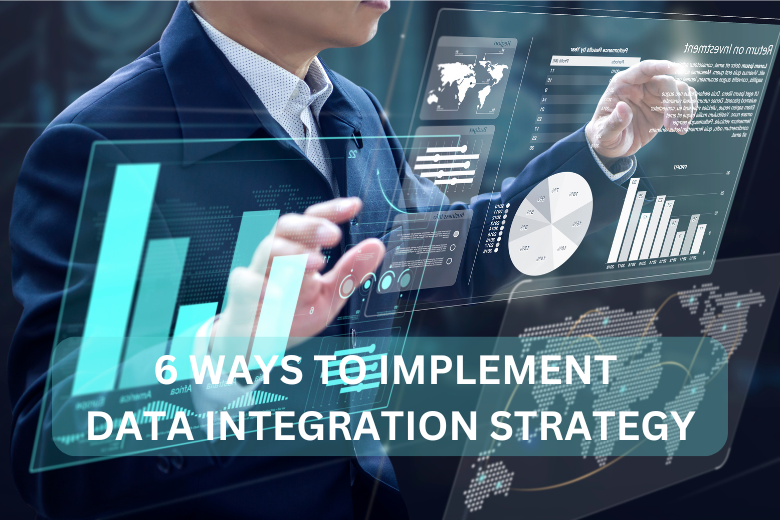
Data must be at the heart of every decision in today’s business world. It is the most valuable resource if it is stored, processed, managed, and disseminated in a way that enables useful information to drive decision-making and value creation. This requires a modern approach to data integration.
When deciding how data can be used to improve customer service and facilitate business operations through data integration, a number of factors need to be considered. Which data integration technology will help consolidate and use big data? Who within the organization will want access to the data? How will the business comply with data protection requirements?
Companies must implement a sound business strategy that impacts their ability to add value to the customer experience and increase sales. To become a data-driven business, you must understand your business objectives, available resources and needs, and the general direction of today’s competitive environment. With this in mind, a data integration strategy can be developed to achieve success.
What Is a Data Integration Strategy?
A data integration strategy defines the actions needed to achieve data integration goals.
Based on this strategy, a detailed plan can be developed to achieve the strategic goals. The plan describes what needs to be done, who will do it when it is done, who is responsible for it, and who should manage it.
The data integration strategy should be aligned with the organization’s business objectives.
A good data integration strategy should
- should consider the use cases and challenges of data (about the objectives),
- take into account the types of data used by the group
- consider the budget
- guide the organization toward a sensible, practical, and consistent approach to integration; and
- to allow a flexible solution that is capable of accommodating future needs.
Ideally, the integration strategy should achieve business objectives, facilitate access to data and connect the data sources that the organization needs to operate efficiently, innovatively, flexibly, and cost-efficiently.
6 Data Integration Techniques
If your organization needs to process data from different internal and external sources, you need to choose the proper data integration technology. Depending on the variety, complexity, and number of data sources, you can select from the following types of data integration technologies:
Data Warehouse
A data warehouse, often a shared data repository, is one of the most common integration technologies where data is replicated from a single source and stored in a data warehouse. This approach to data integration, where all data is stored in a single view, involves cleaning, formatting, and transforming the data before it is stored in the data warehouse. The data warehouse also promotes data integrity as all information can be retrieved from the data warehouse, which acts as a single source.
ETL (Extract, Transform, and Load)
ETL is the most popular data integration technique. The process involves three main stages:
Extraction: data is extracted from different source systems and databases.
Transformation: the extracted data is transformed according to the target schema and business rules. This may include data cleaning, enrichment, merging, and formatting.
Loading: the transformed data is loaded into the data warehouse or target database for analysis and reporting. ETL processes are usually scheduled and run in batch mode.
ESB (Enterprise Service Bus)
This is a system of software architecture enabling different applications to interconnect. It allows data to flow between systems through a central node, enabling real-time or near-real-time data integration. ESB uses messaging and data transformation functions to ensure interoperability and seamless data exchange between applications.
Data Virtualization
Data virtualization refers to creating a virtual layer with no underlying data sources. This allows users to access data from different sources and perform queries as if it were a single database. Data visualization tools allow a single data view without physically transferring or copying it. This method is beneficial for real-time access to data without lengthy ETL procedures.
MDM (Master Data Management)
The goal of master data management is to create and maintain a single authoritative source of truth for key data entities (such as customers, products, and locations) within an organization. This includes the development of data management principles, data quality standards, and data management processes. MDM helps ensure data consistency, accuracy, and integration across systems and outcomes.
CDC (Change Data Capture)
CDC is a method of capturing changes in source systems and replicating them in near real-time to the target database. It detects, and records changes in source data, such as insertions, updates, and deletions, and then transfers them to the target database. CDC reduces the need to update all data and helps synchronize data between different systems.
Future of Data Integration
The incredible growth in cloud computing capabilities will continue to drive exciting business changes. Data integration strategies will evolve with it.
We can’t predict the future, but we do know that as mobile technology and cloud services evolve, managers, analysts and executives will be less tied to their desks. They will be able to access data, perform complex searches across multiple systems and get real-time results from their mobile devices wherever they are. This means that data integration tools will work seamlessly across devices and networks.
Businesses will start sharing data. This will require data integration methods that work not only within an organization but also between organizations. The need for such improved access will force data integration architectures to develop even more efficient capabilities. Cloud platforms will enable data to be shared at an even greater scale across organizations and at an even higher speed.
Summary
Data integration is vital for an organization that wants to become more data-driven, especially when using different IT stems for its business processes. The choice of integration strategy depends on the data integration structure’s characteristics and the organization’s business needs.